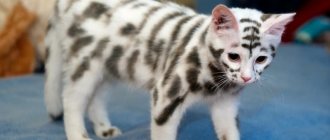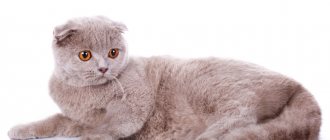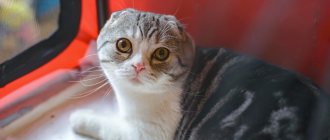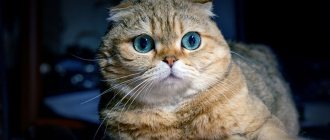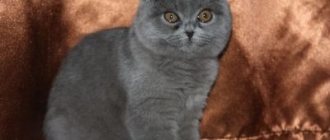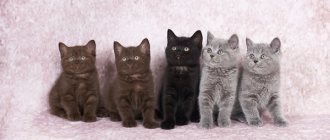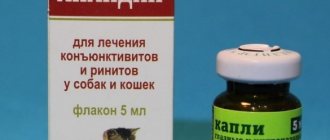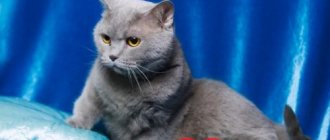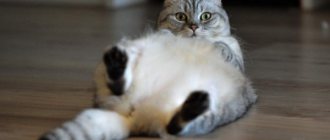Scottish Fold cats come in a wide variety of colors. But, since it is believed that the character of a pet depends, among other things, on its color, future owners who decide to get a pet are very interested in the choice of color: after all, they want to know what kind of character their pet will have. Red Scottish Fold cats are very popular, as this color is considered a symbol of joy and prosperity. It is no coincidence that many future owners strive to purchase a red pet. The peculiarities of their character and conditions of detention will be discussed in more detail.
Breed standard
Red Scottish Fold cats, like their counterparts of other colors, are distinguished by well-developed muscles. They have straight, powerful limbs, oval paws. Scottish Folds have a strong and prominent chest and shoulder girdle. Their fur is quite dense, short, and not pressed to the body. The most characteristic feature of Scottish Folds is their flattened ears. All representatives of this breed have a well-built, proportional body. They are fluffy and look very attractive.
Scottish Fold kittens are born with their ears sticking up. Only after 3 weeks do some of them have ears that become crooked. If the ears remain sticking out, these kittens are called straight-eared Scots or Scottish Straight.
Disadvantages of British redheads
The main disadvantage is that the standard color is extremely rare. Only a few can boast of a rich coat color, as well as a monochromatic one. Usually there is either an uneven color or there are white spots on the body. No one will allow such animals into exhibitions, although they are incredibly beautiful. Red tabby kittens and ticked kittens are not allowed.
The peculiarities of red are that the color fully corresponds to the declared one and there is not a single deviation of even a half tone. Only in this case can saffron milk caps be purebred. Today, meeting such people is a great success, and buying one is real happiness.
Did you like the article?
Character
Red Scottish Fold cats are very sociable, but at the same time, loyal to their owners. They love children and willingly play with them. Representatives of this breed easily get along in the house with other pets.
These animals are distinguished by their intelligence, they easily remember everything new, and are very curious. They are easy to train due to their mental abilities. However, when starting to train, it is important to let your pet understand that these skills will be beneficial and interesting to him.
The red Scottish Fold cat loves cleanliness very much, so she repeatedly brushes her fur and sharpens her claws throughout the day.
These pets are moderately active, unpretentious and do not require professional care from the owner.
These cats do not like to lie on the laps of their owners; just being next to them is enough for them. The location of their owner is very important for them. They are unobtrusive, but can be intolerant of people and other pets in whose company they are uncomfortable.
Red Scottish Fold pets easily adapt to new conditions and unfamiliar people. They patiently participate in cat shows, and at the same time behave quite relaxed, surprising others with their endurance.
Cats of this breed are distinguished by their dignity. If they are offended, they simply leave the offender without harming him in return. They are very balanced and difficult to anger.
They can be wayward. Especially Scottish Folds do not tolerate it when their freedom is limited. And if you don’t feed them on time, they will loudly inform their owners about it.
Bicolors
The coat color of these beautiful creatures has two colors, and a combination of white and any other shade is mandatory. Purebred bicolors must have a white belly, neck, chest, chin, limbs and, of course, muzzle.
There are a lot of breeds of red cats and each has distinctive characteristics in behavior, character, health and nutrition. Their prices vary quite widely.
How to prepare for the arrival of a kitten in the house
Already at 2 months, lop-eared babies can leave their mother and move to a new home. Naturally, future owners should prepare for the arrival of a furry baby in their home.
Dishes made of porcelain, stainless steel or food-grade plastic are perfect for little Scots to eat and drink.
The kitten will need a litter tray. Toys and a house can be purchased a little later.
To transport a red Scottish Fold you will need a spacious carrier. The kitten will also need a scratching post, but you don’t have to buy one, because you can make it yourself from a simple board. The board must be wrapped with a rope, and then the rope must be secured in a circle.
Acquisition of a red Scotsman
When buying a kitten from a nursery, the potential owner should ask what kind of food the breeder gave him, since a sudden change in the menu can cause negative consequences for the young body.
Scottish Fold babies are given food 4 times a day; over time, teenage kittens change their diet to 3 meals a day, and after 8 months they can already be given food only twice a day.
Cats of this breed love to communicate, they really need human company, but they are not annoying. When no one is home, these cats will still come up with something interesting to do.
When their owners are away for long periods of time, furry pets feel sad, and a dog could brighten up their loneliness. Red Scottish Folds are characterized by great affection for their owners; they show them their kindness and tenderness with great zeal.
Before purchasing a young fiery Scotsman, you should take a closer look at him and understand his character. In order for a relationship of mutual understanding to develop with a furry friend, he must be similar in character to the future owner, then you will be able to be friends with the pet and get along well.
What to feed
The owner must approach the nutrition of red Scottish Fold cats with all seriousness. When purchasing a red fold-eared Scotsman, you need to find out what food the breeder fed him. This is one of the most important questions, since changing food can have unpleasant consequences for a red-haired baby. Usually such kittens are fed 4-5 times a day. As you get older, meals are limited to 3 meals. After reaching the age of 8 months, such pets are fed twice a day.
You should not give your cat cold food from the refrigerator. You should wait until it warms up to room temperature.
At first, the kitten has a poor appetite. There is no need to worry about this, because in most cases it is a consequence of stress caused by a change in the usual environment and separation from the cat mother.
Types of colors
Scottish Fold or Scottish Fold, a small animal weighing about 6 kg. The main feature is the presence of small ears, tilted forward and covering the auricles. Another characteristic feature is large, widely spaced eyes, very expressive. These cats meow strangely and creakingly. The breed was bred in the 60s of the last century.
Scottishfolds are characterized by both short plush and semi-long coats. Kittens will be born with straight ears. After a certain time, some kittens' ears become bent. The rest fall into the Scottish Strike category. The Scots have a strong, rounded torso. Short neck. The legs are of medium length, the tail is above average length. The colors of the eyes are very diverse - yellow, green, blue, brown, orange, gold. The nose is short and wide, with large whisker pads. There is a significant variety of colors of this breed.
White
All Scottish Folds are descended from white cats. They can have almost any coloring of their eyes, they even have different eyes - one eye is dark orange, the other is light blue. In white kittens up to one and a half years old, blue or black fur is acceptable on the head; after molting, it disappears.
White kittens are sometimes born deaf. When purchasing, it is worth checking by clapping your hands.
Cream
Very elegant color with a faint peach touch. Small leopard spots sometimes appear during molting. Eye coloring is dark orange or orange.
Black
In black Scots, no light inclusions are allowed. Only concentrated and deep color. Eye color is dark orange.
A cat's eyes are larger in relation to body size than those of most mammals.
Cinnamon color
The coloring is rare, so kittens are expensive. Various color gradations are allowed. The paw pads are brown and pink, the nose lobe is the same.
Brown (chocolate)
Any gradation of brown tones is allowed. Residual patterns after molting are not recognized. This color is considered unique. The nose and paw pads are light brown.
Lilac
The fur is beige. The eyes should be dark orange or orange in color.
Cats can see up to 60 meters away. Field of view is about 185, peripheral up to 285 degrees.
Red color
The uniqueness of the color of the animal depends on the color scheme and the clarity of the shades. In red Scottishfolds, the base of the hairs is light and gradually darkens towards the end. The tip is red.
Blue
Scottishfold blue has a wide variety of shades. From the lightest to the darkest, from light blue to blue. A solid color is required.
Bicolor
The coloring of bicolor cats allows two colors, one of which is white in combination with any other. The color distribution is approximately 30/70%. The classic bicolor, which is most valued, has the ideal of white paws, chest, neck and chin, and part of the muzzle. There is a kind of open necklace on the chest and neck. A small white triangle with a point on the forehead. The most common and beautiful bicolors are CREAM, BLUE and BLACK.
Point or Whiskas
A distinctive feature of this color is the light fur, like a background. She has darker shades in certain areas of her body. On the paws, ears, muzzle and tail area. The main thing here is the contrast of colors; extraneous patterns are not allowed, in particular on the stomach. The kittens are born light, but as they grow older the color becomes more pronounced. Only after a long period of time, up to 2 years, is the final coloration of the cat established.
Lilac (lilac)
Color code c33. The color of the body is slightly different from light, there is a slight purple coating, the spots of markings are gray with pink, dark but warm in tone. Bright blue eye color. The paw pads and nose pads are pink and gray.
The surface pattern of a cat's nose is unique, just like a person's fingerprints.
Blue
The standard color of this cat is “Siamese”, since Siamese cats have this coloring. Color code a33.
Cream
Color code e33. Light body, almost white. A color deposit under baked milk is allowed. The markings are cream, the eyes are light blue or dark blue. A small surviving drawing may be visible. Paw pads and nose pads are beige. If they are not very contrasting, then the eyes should simply shine.
A kitten's eye color may change over time.
Cream blue
The difference lies in the background fur. These are different variations of baked milk.
Chok-lit (chocolate)
Color code b33. Chocolate colored spots on the body. The body is beige.
Red
Color code d33. Unusual red color with warm tint marks. The body is white with a slight touch of gold or a faint orange, reddish tint. The paw and nose pads are pink and beige.
Strength
Dark brown patches of markings on a light cream body. The pads on the paws and nose are chocolate.
Torti
The main thing in coloring is that the markings of the spots repeat one of the main colors, spots of red or cream color.
- SIL CAKE (f33)
- BLUE CREAM CAKE (g33)
- CHAKLI CAKE (h33)
- LILAC CAKE (j33)
- CINNAMON CAKE (q33)
- FAUN CAKE (r33)
Tortoiseshells
Due to genetic characteristics, tortoiseshell colors are found exclusively in cats. This color is a combination of finely spotted coloring in equally distributed colors of red and black cells. The color should look proportional. The colors of the two cells should be evenly distributed. Brindle spots are prohibited. Eye color is dark orange or gold. Paw pads and nose pads are black, pink or black and pink. Recognized tortoiseshell colors include:
- BLACK-RED (SFSf)
- CHOCOLATE RED (SFSh)
- BLUE-CREAM (SFSg)
- LILOW-CREAM (SFSj)
- CINNAMON-RED (SFSq)
- FAUN-CREAM (SFSr)
Also, depending on the haze, a second letter is added - s.
- TORBILE - tortoiseshell tabby (tiger color). This is f22,23,24. Spot, stripe or marble.
- TORTI – tortoiseshell color point.
Black (ns)
A rare, special color, so it is in demand. The essence of color: white undercoat. When the cat moves, a light color appears. That's very beautiful. As a rule, the hairs on the sides are lighter and slightly silvery. There should be no extraneous inclusions or drawings. The paw pads and nose pads are black. Dark orange or orange eye color.
Chocolate
Compared to the classic brown color scheme, the color here looks lighter. “Silver” appears on the sides and on the ears. The paw pads and nose are chestnut.
Blue smoke
Very strict requirements for this color. All shades of blue are allowed. The undercoat is white, no residual patterns.
Tabby
This is the most contrasting and brightest color of the Scottishfold. The color of the coat can be varied, and the pattern is only spotted, brindle or marbled. There is also a ticked color - similar in appearance to a single color, but striped hairs appear on the back, and in the forehead area there is a characteristic “M”.
Spotted
The letter “M” in the forehead area, a necklace, circular stripes on the paws and tail, spots on the belly. The stripes are not continuous, but torn throughout the entire body area. Leopard coloring book.
Striped
It looks like a spotted one, but the stripes are clear, not broken, and contrasting. If the stripes widen or are interrupted with age, the color is no longer considered brindle. Eye color – orange, dark orange, green.
Marble
Two lines stretch longitudinally from head to tail. There are closed circles on the sides. Spots similar in description to butterflies on the back of the head. The letter “M” in the forehead area, rings in the form of closed lines-stripes on the neck. The merle color is present in kittens from birth.
Particolor (calico)
Unique coloring - tortoiseshell coloring on a light background.
Shaded (shaded)
An individual color feature is a white undercoat. The upper part of the hair is shaded with a dark color. Light color exclusively on the belly and sides. There should be no surviving drawings. Possible rings on the paws and the letter “M” in the forehead area. The main shaded colors are silver, gold and red.
Wang
This is a rather rare color. The main color of the fur is white. There are spots on the face and tail. Uneven stains and multiple stains on the body are acceptable.
Harlequin
Among the Scots this color is considered rare. The main white color has large spots, the tail is colored.
Features of care
Caring for Scottish Fold ginger cats, photos of which are presented in the article, is simple. If the eyes are inflamed and fester, they should be wiped several times a day with a special solution, some kind of medicinal product or a weak infusion of chamomile. If the inflammation does not go away, you should contact your veterinarian.
Particular attention should be paid to caring for the ears, which need to be wiped at least twice a month with a special liquid. At the same time, you cannot pull the cat’s ears too far and turn them inside out, as he will be afraid of this procedure. You shouldn't use cotton swabs, but cotton swabs will do. Naturally, the procedure requires the owner to be extremely careful so as not to damage the pet’s ear. If the cat has healthy ears and no discharge, then there will be only a little earwax on the cotton wool. If a cat has a brown crust in its ears, this indicates ear mites. You should immediately contact a veterinarian, because if you contact a specialist in a timely manner, serious problems can be avoided.
To cut the claws of a cat like the red Scottish Fold, whose photo is presented in this article, you need to use special clippers for the claws of small animals. You can only cut off the very tips of the claws! Otherwise, you can damage the blood vessels, which will cause the kitten severe pain and lead to adverse consequences.
Features of the red color of the British
The British ginger cat is a representative of the “red” color, which is characterized by a deep and uniform dark color along the entire length of the coat. Some animals have slightly lighter or, on the contrary, darker hairs in the paws, tail or forehead - this is normal. The eye color of quadrupeds is copper or bright yellow. The standard breed is usually monochromatic. If there are deviations, then the cat’s color has a different name.
Animals are unusual and original. Some note that these British cats resemble foxes.
Bathing a ginger cat
The red Scottish Fold should be taught to bathe at an early age. First, you should wipe them with a damp towel, and then give him his favorite treat so that the kitten understands that water procedures are not scary and not dangerous for his life. After some time, the kitten can be bathed. It is recommended to protect your baby's ears from water getting into them during bathing by covering them with cotton swabs or your hands. You can drip special protective oil into your eyes before bathing, but this procedure is not necessary.
The water temperature should be at least 36 degrees, because swimming in cool water can make the animal sick, and swimming in hot water will increase the heart rate of the red Scotsman and make it difficult for him to breathe. In addition, the cat will not tolerate uncomfortable conditions and will simply run away from the bath.
The shampoo should be a special cat shampoo; a human hair wash will cause dermatitis in your pet and deteriorate the quality of the coat.
Genetics of red color
The red, or more correctly red, shade of an animal's coat depends on the presence of the Orange gene or simply O. It is located on the X chromosome, and therefore cats with this color are more common than cats. The presence of this mutation, which is dominant, leads to the fact that the body begins to produce the pigment pheomelanin, which leads to a red color.
Its peculiarity is that it is never solid, forming a bizarre pattern, spots and stripes on the pet’s fur coat.
If the recessive diluent d has entered the animal's genome, the color of the cat will change from red to cream. Another feature of the Orange gene is that when it is present on both X chromosomes (heterozygous state), the kitten acquires tortoiseshell fur. Since the gene is located on a specific chromosome, it is possible to predict the coat color of future kittens based on the color of the parents.
People will be born red if:
- Mom is red or cream, and dad is black or gray. Ginger cats and tortoiseshell cats will be born.
- Both parents have a red tint to their coat.
- Mom is black, and dad is red - the cats will take after their mother, and the cats will turn out to be tortoiseshell in color.
Smoky
This coloring appears under the influence of the silver gene and is characteristic of folds whose guard hairs are solid in color - black (black smoke), red, lilac, blue. The base of the undercoat is silvery-white. Thanks to the contrast of shades, it seems that the cat’s fur coat has the color of a light foggy haze.
It should be noted that the smoky color is considered undervalued today; animals with this coat color are not allowed to participate in exhibitions. But breeders believe that smoky cats are among the most attractive folds.
Tortoiseshell colors
It is an original combination of red and dark or cream spots. This should not be confused with the tri-color pattern, as the cream color in the tabby pattern is a bleached red. There is no clearly defined standard regarding tortoiseshell color; the only condition is that the distribution of colors must be harmonious.
It is noteworthy that only cats have the rare tortoiseshell color. In cats, it is observed only in cases of genetic failures; such individuals are incapable of reproducing offspring.
Advantages and disadvantages
The advantages include the British cat's calm character, cleanliness, and ability to get along with any family member, including other pets.
Good mental abilities are also a plus: cats understand prohibitions the first time.
About the disadvantages: red color in British cats is very rare. Often there is an uneven color with white spots on the tail, paws, and chest. Such cats are beautiful, but they will not be allowed into the exhibition.
The disadvantages include heavy shedding at least 2 times a year. During this period, special attention should be paid to hair care. It is recommended to comb out at least once a week, and with the onset of winter, this procedure is carried out daily.
The sedate lifestyle of a British breed cat is fraught with obesity. It is necessary to monitor portion sizes, play with your pet, and walk it.
Who would suit a red-haired Briton?
Many people think that color does not affect character. Breeders have a different opinion: British redheads are considered to be real aristocrats. They do not bother their owner by meowing. They don’t get in their way when begging for anything. They are reserved and independent. They lead a sedentary, quiet lifestyle.
Smart by nature. They become toilet trained instantly, all you have to do is show the kitten the litter box once. British cats are clean and do not require careful, long-term care. Cats have good health.
British ginger cats are attached to their owners, but are not known for their affection: they rarely allow themselves to be stroked and do not sit on laps. They get along with both children and animals: a dog will become a good friend for a Briton. They play with children according to their mood, often ignoring them. When a person pays increased attention to his person, he will not release his claws and will prefer to leave. They love solitude, and therefore are suitable for busy and business people.
